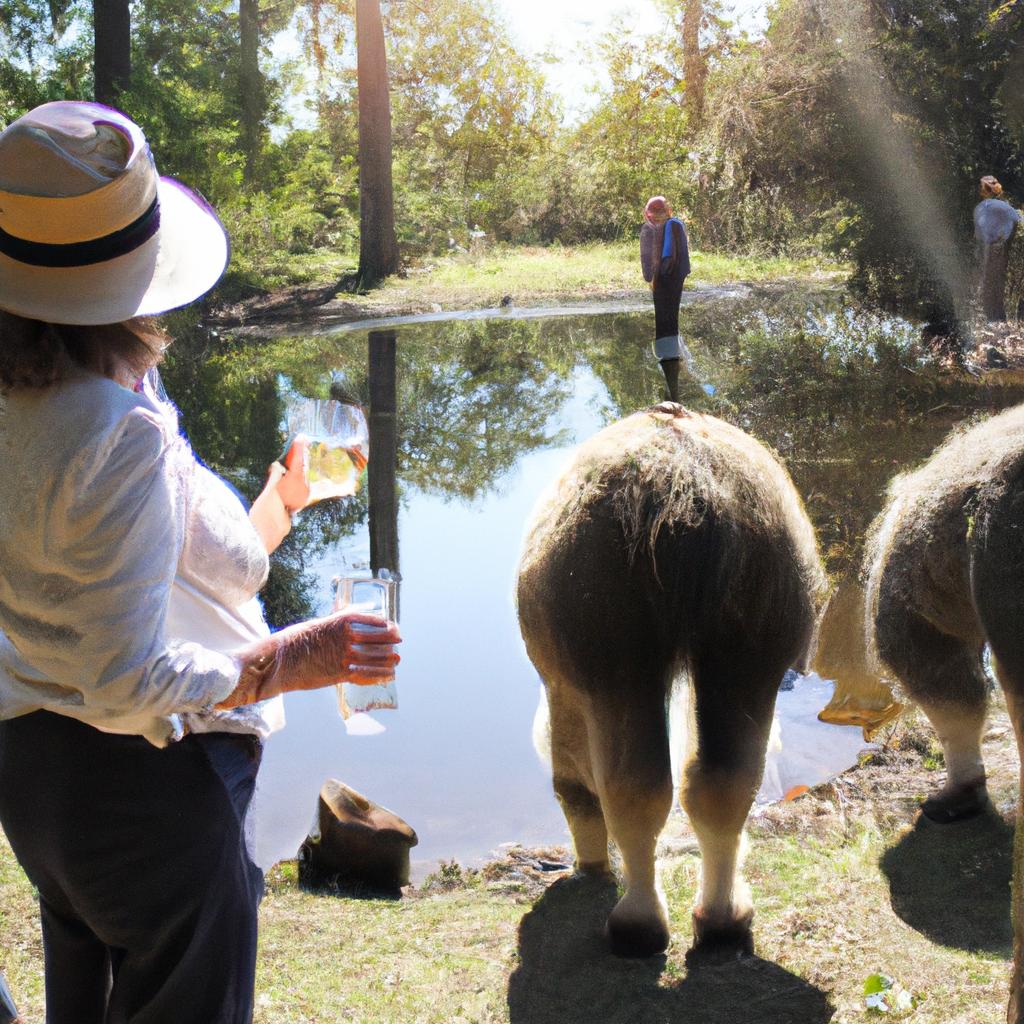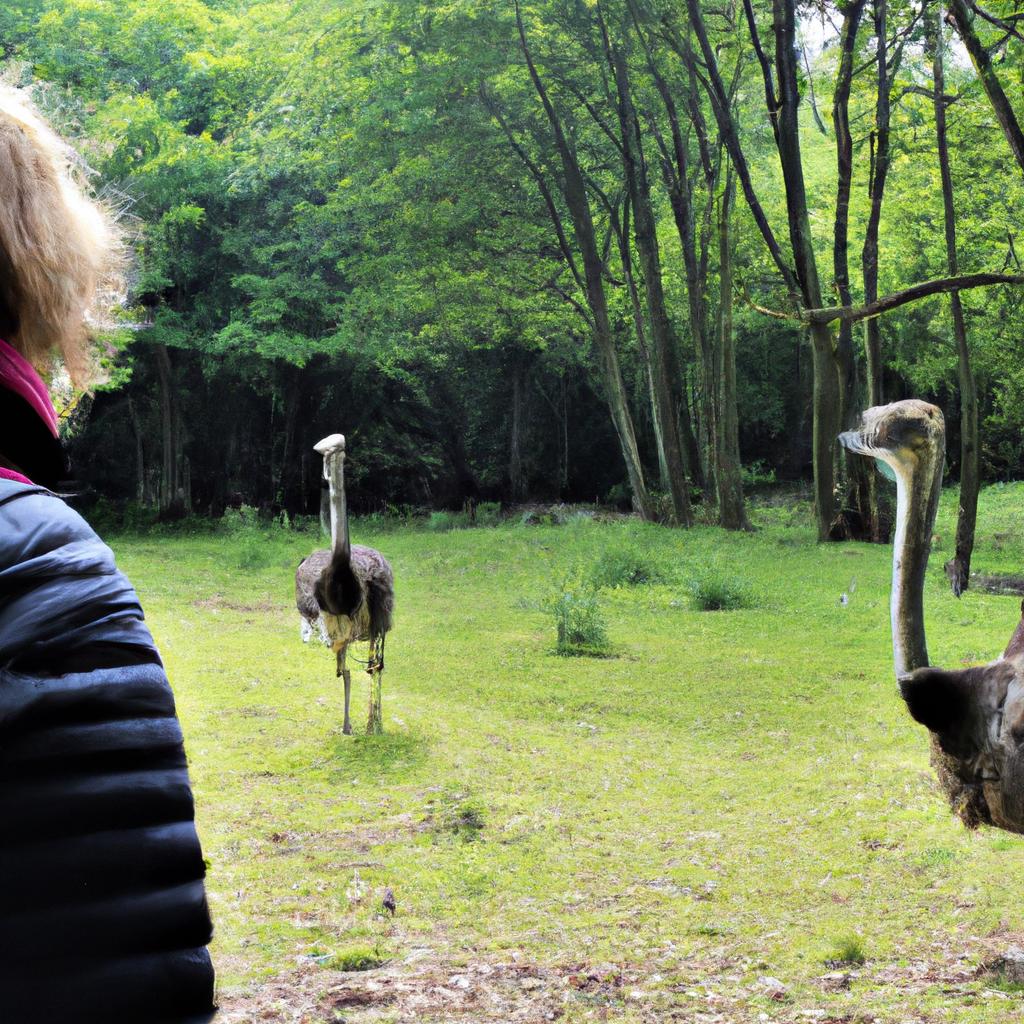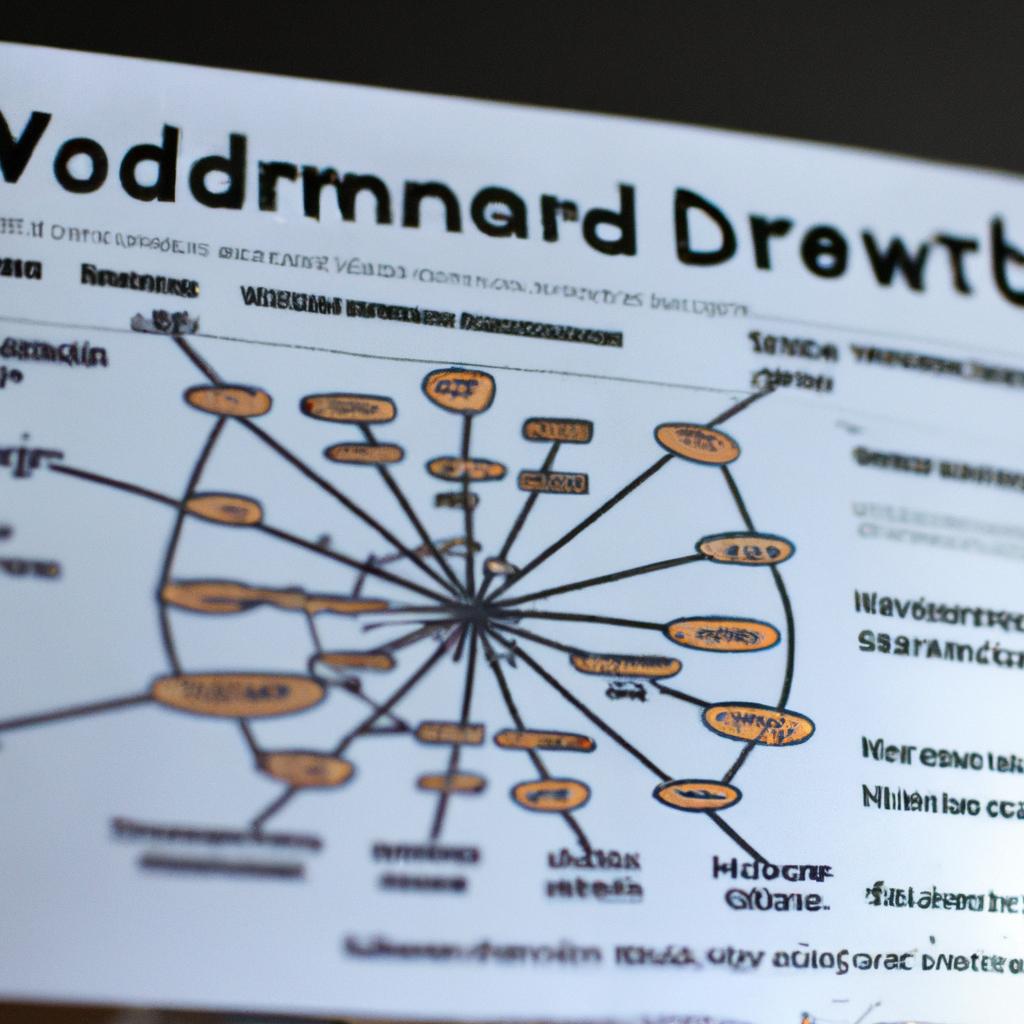Predator-prey relationships have long fascinated ecologists and naturalists alike, as they reveal the intricate dynamics of nature’s predation dynamics. These interactions play a crucial role in shaping ecosystems, influencing population sizes, behavior, and even evolution. By studying these relationships, scientists gain valuable insights into the complex web that connects species within an ecosystem. For instance, consider the case of wolves and their prey in Yellowstone National Park: the reintroduction of wolves resulted in not only changes to elk populations but also cascading effects throughout the entire ecological community.
Understanding predator-prey relationships requires examining various factors such as hunting strategies, camouflage mechanisms, defensive adaptations, and even spatial dynamics. Predators employ diverse tactics to capture their prey, ranging from stealthy ambushes to chasing down their quarry at high speeds. Prey species, on the other hand, have evolved an array of defenses including cryptic coloration for camouflage or warning signals such as aposematism to deter would-be predators. Furthermore, spatial dynamics play a critical role as both predators and prey navigate through their shared habitat; this interplay adds another layer of complexity to these interactions.
Through careful observation and rigorous scientific study, researchers aim to unravel the intricacies underlying predator-prey relationships. This article explores This article explores the various factors that influence predator-prey relationships, including the role of predation in maintaining population balance, the impact of prey availability on predator behavior, and the coevolutionary arms race between predators and their prey. It also delves into specific examples of predator-prey dynamics in different ecosystems, highlighting how these interactions shape ecological communities.
Additionally, this article discusses the importance of studying predator-prey relationships for conservation efforts. Understanding how predators and prey interact can inform management strategies to protect endangered species or control invasive populations. By comprehending these complex relationships, researchers can develop more effective conservation measures that maintain ecosystem health and biodiversity.
Overall, this article aims to provide a comprehensive overview of predator-prey relationships, shedding light on their significance in understanding ecological systems and informing conservation practices.
Predator-Prey Interactions
Predator-prey relationships are a fundamental aspect of ecological systems, shaping the dynamics of natural populations. These interactions occur when one organism consumes another, with predators targeting and consuming prey as a means of sustenance. To illustrate this concept, consider the case study of wolves (Canis lupus) preying on moose (Alces alces) in North America.
The predator-prey relationship is characterized by several key elements that contribute to its complex nature:
- Co-evolution: Predators and prey have evolved together over time, engaging in an ongoing arms race where each species develops adaptations to outwit or evade the other.
- Population regulation: The interaction between predators and prey can influence population sizes. When prey populations increase, more food becomes available for predators leading to their increased abundance. However, as predation intensifies, prey numbers decline due to higher mortality rates.
- Behavioral strategies: Predators employ various hunting techniques such as ambushes or pursuit predation while prey develop defensive behaviors like camouflage or group living to enhance survival chances.
- Trophic cascades: Changes in predator or prey populations can trigger cascading effects throughout the ecosystem. For instance, if predators become scarce due to factors like habitat loss or human intervention, it can lead to an increase in herbivore populations which then exert greater pressure on plant communities.
To emphasize the significance of these interactions within ecosystems, let us consider a hypothetical scenario involving top predators and their prey:
| Top Predator | Prey Species 1 | Prey Species 2 | Prey Species 3 |
|---|---|---|---|
| Lion | Gazelle | Zebra | Wildebeest |
| Tiger | Deer | Wild boar | Sambar deer |
This table exemplifies how different top predators target distinct prey species based on factors such as size, behavior, and habitat. Such diversity in predator-prey interactions not only sustains the balance within ecosystems but also contributes to the richness of biodiversity.
Understanding predator-prey dynamics is vital for comprehending ecological balance, which will be explored further in the subsequent section. By analyzing these intricate relationships, scientists can gain insights into the complex web of life that exists in our natural world.
[Continue reading about Ecological Balance…]
Ecological Balance
Predator-Prey Relationships: Natural History’s Predation Dynamics
Transitioning from the previous section on “Predator-Prey Interactions,” we delve further into the intriguing world of predator-prey relationships. These connections are fundamental to the ecological balance within ecosystems, shaping the dynamics between species and influencing population sizes. To illustrate this complex interplay, let us consider a hypothetical case study involving wolves and deer.
In a pristine forest ecosystem, wolves rely heavily on deer as their primary source of food. The presence of an abundant deer population allows the wolf population to thrive. However, as the number of wolves increases due to successful hunting, they exert greater predation pressure on the deer population. Consequently, with increased predation rates, deer numbers decline over time. This reduction in prey availability poses a significant challenge for the wolves’ survival and reproduction.
Understanding these intricate predator-prey interactions is crucial in comprehending how ecosystems achieve ecological balance. Here are some key insights:
-
Population cycles: Predator-prey relationships often display cyclic patterns known as limit cycles or oscillations. As prey populations decrease due to predation, fewer resources become available for predators, causing their numbers to dwindle as well. Subsequently, reduced predation pressure allows prey populations to recover until they once again provide ample sustenance for predators.
-
Coevolutionary arms race: Over generations, predators and prey engage in an evolutionary race where each develops adaptations that enhance their respective chances of survival or capture. For instance, gazelles have evolved exceptional speed and agility to evade cheetahs’ pursuit while cheetahs possess remarkable acceleration capabilities for successful hunts.
-
Keystone species: Certain predators play a pivotal role in maintaining biodiversity within ecosystems by controlling prey populations deemed dominant or disruptive if left unregulated. By preying upon such species, keystone predators indirectly promote coexistence among other organisms sharing the same habitat.
To visualize these concepts, consider the following table:
| Predator-Prey Relationships | Key Features |
|---|---|
| Population cycles | – Cyclic patterns in predator and prey populations- Decreased predation pressure during periods of low prey availability |
| Coevolutionary arms race | – Adaptive traits developed by both predators and prey over time- Examples: camouflage, speed, defensive mechanisms |
| Keystone species | – Predators that control dominant or disruptive prey populations to maintain balance- Influence on overall ecosystem biodiversity |
As we continue our exploration into the intricate world of predator-prey relationships, the subsequent section will shed light on the fascinating hunting strategies employed by various predators. By understanding these techniques, we gain deeper insights into how predators successfully capture their elusive prey.
[Subsequent section: Hunting Strategies]
Hunting Strategies
Predator-Prey Relationships: Natural History’s Predation Dynamics
Ecological Balance serves as the foundation for understanding predator-prey relationships. In this section, we explored how various factors contribute to maintaining equilibrium in ecosystems. Now, let us delve deeper into the intricacies of hunting strategies employed by predators and its impact on prey populations.
To illustrate these concepts, let us consider the case study of the African savannah ecosystem. Here, lions (Panthera leo) play a crucial role as apex predators, exerting influence over herbivore populations such as zebras and wildebeests. Lions are known for their cooperative hunting behavior, which enables them to take down larger prey more efficiently. By targeting weaker or injured individuals within herds, they ensure that natural selection favors healthier prey with superior survival traits.
When examining predatory behaviors across different species and environments, several key observations emerge:
- Ambush Predators: Species like crocodiles lie in wait for unsuspecting prey to approach before launching an attack.
- Pursuit Predators: Wolves exhibit remarkable endurance while chasing their quarry over long distances until exhaustion sets in.
- Stealth Hunters: Leopards excel at blending into their surroundings and rely on stealth rather than speed to capture their victims.
- Specialist Predators: Some species have evolved highly specialized adaptations to exploit specific niches; examples include anteaters with elongated tongues designed for reaching deep into anthills.
These diverse tactics employed by predators highlight the intricate web of interdependencies present in nature. To further comprehend this dynamic relationship between predators and prey, consider the following table:
| Predator | Prey | Hunting Strategy |
|---|---|---|
| Cheetah | Gazelle | High-speed pursuit |
| Polar Bear | Seal | Arctic ambush |
| Spider | Fly | Web entrapment |
| Eagle | Fish | Aerial swoop and snatch |
The emotional response evoked by these examples underscores the fascinating nature of predator-prey relationships. Understanding hunting strategies is not merely an intellectual exercise, but a glimpse into the intricate dance between life forms in their quest for survival.
As we explore the co-evolutionary adaptations that have arisen from this ceaseless struggle, let us now turn our attention to the remarkable ways in which predators and prey have adapted to counteract each other’s strengths and exploit weaknesses.
Co-evolutionary Adaptations
Section H2: Hunting Strategies
A fascinating example of the intricate dynamics between predators and prey is the relationship observed in the African savannah. Imagine a majestic lioness stealthily stalking her quarry, blending seamlessly with the tall golden grasses as she approaches an unsuspecting gazelle. This dramatic scene exemplifies one hunting strategy employed by predators to secure their next meal.
Predators have evolved a diverse range of strategies to enhance their chances of capturing prey successfully. These strategies can be categorized into several types:
-
Ambush Predation: Some predators rely on ambush techniques, lying in wait for unsuspecting prey to come within striking distance. By remaining motionless, hidden among vegetation or camouflaged against their surroundings, these predators maximize their chance of surprise and capitalize on the element of surprise.
-
Pursuit Predation: Other predators employ pursuit tactics, relying on speed and agility to chase down fleeing prey over long distances. Cheetahs are renowned for their incredible acceleration and top speeds, allowing them to rapidly close the gap between themselves and their intended target.
-
Cooperative Hunting: Certain species demonstrate remarkable social behavior by engaging in cooperative hunting strategies. Wolves, for example, form packs that work together to bring down larger prey such as bison or elk. Through collaboration and coordinated efforts, they increase their overall success rate while also minimizing individual risk.
-
Trap Setting: A lesser-known hunting strategy involves trap setting, where certain predatory species construct snares or other ingenious mechanisms designed to ensnare unwary prey. The ogre-faced spider weaves a web shaped like a net which it holds at arm’s length until an insect flies into it unknowingly becoming trapped.
To further illustrate the diversity of predation strategies across different ecosystems worldwide, consider Table 1 below:
| Predator | Prey | Habitat | Strategy |
|---|---|---|---|
| Polar Bear | Seal | Arctic | Ambush Predation |
| Orca | Penguin | Antarctic | Pursuit Predation |
| African Wild Dog | Impala | Savannah | Cooperative Hunting |
| Trapdoor Spider | Insects | Forests | Trap Setting |
By examining such varied strategies, it becomes evident that predators have evolved to exploit different ecological niches and prey characteristics. Through these hunting techniques, they not only secure their own sustenance but also play a critical role in shaping ecosystems by controlling prey populations.
Transitioning seamlessly into the subsequent section on “Foraging Behavior,” we delve deeper into how predators navigate their environments to locate and acquire food sources efficiently. Understanding these behaviors offers valuable insights into the complexities of predator-prey dynamics.
Foraging Behavior
Predator-Prey Relationships: Natural History’s Predation Dynamics
Co-evolutionary Adaptations have played a significant role in shaping predator-prey relationships. Now, let us delve into the fascinating world of foraging behavior that further contributes to these dynamics.
Foraging behavior is a fundamental aspect of an organism’s survival strategy, dictating how it obtains and consumes resources within its environment. To illustrate this concept, consider the hypothetical case study of a lioness hunting on the African savannah. As she stalks her prey, various factors influence her foraging decisions and techniques:
- Optimal foraging theory suggests that predators aim to maximize their energy intake while minimizing expenditure during hunting.
- The availability and distribution of prey species directly impact the success rate of predation events.
- The presence of other competing predators may lead to increased competition and altered foraging strategies.
- Environmental conditions such as weather patterns or seasonality can affect both predator and prey behaviors.
To gain insight into the complex nature of foraging behavior, we present a comparative analysis through a three-column table showcasing different predator species and their corresponding adaptations:
| Predator Species | Foraging Behavior | Adaptations |
|---|---|---|
| Cheetah | Pursuit Hunting | Exceptional speed and agility |
| Owl | Sit-and-Wait Strategy | Silent flight; acute hearing |
| Polar Bear | Ambushing | Camouflage coat; patience |
| Spider (Orb Weaver) | Web Construction | Specialized silk production; intricate web design |
This striking diversity demonstrates how organisms have evolved distinct strategies tailored to exploit specific ecological niches efficiently. Through natural selection, traits favoring successful foraging have been honed over time.
Understanding these intricate interactions between predators and their prey has broader implications beyond individual fitness. By regulating population sizes and controlling community structure, predation plays a crucial role in maintaining ecosystem stability. In the subsequent section, we will explore the impacts of predator-prey relationships on ecosystems and delve into their cascading effects.
Impacts on Ecosystems
Section H2: Impacts on Ecosystems
As we delve further into the intricate dynamics of predator-prey relationships, it becomes evident that these interactions have profound impacts on ecosystems. The interplay between predators and their prey shapes not only the populations involved but also the overall structure and function of ecological communities.
One striking example highlighting the consequences of predator-prey relationships is the reintroduction of gray wolves (Canis lupus) in Yellowstone National Park. After being absent for nearly 70 years, the return of these top predators had cascading effects throughout the ecosystem. As wolf numbers increased, elk (Cervus canadensis) populations declined due to predation pressure. This reduction in elk numbers subsequently led to a decrease in browsing pressure on aspen trees (Populus tremuloides), allowing them to regenerate more successfully. Consequently, this regeneration created suitable habitats for various songbirds and beavers (Castor canadensis). Thus, through this case study, we witness how changes at one trophic level reverberate across multiple levels within an ecosystem.
The impacts of predator-prey relationships extend beyond individual species interactions and permeate various aspects of ecosystem functioning:
- Trophic Cascades: Predators regulate prey populations, preventing them from reaching unsustainable levels. In turn, this prevents overgrazing or overconsumption of resources by herbivores.
- Biodiversity Maintenance: By regulating prey populations, predators contribute to maintaining biodiversity within ecosystems.
- Population Dynamics: Predator-prey interactions influence population sizes and distribution patterns among different species.
- Community Structure: The presence or absence of predators affects community composition and diversity.
To further comprehend the wide-ranging implications of predator-prey dynamics on ecosystems, let us consider Table 1 below:
Table 1: Examples of Ecological Impacts Resulting from Predator-Prey Relationships
| Predator* | Prey* | Ecological Impact* |
|---|---|---|
| Lions (Panthera leo) | Herbivores (e.g., zebras, wildebeest) | Regulate herbivore populations and maintain grassland habitats |
| Orcas (Orcinus orca) | Seals and sea lions | Influence marine food webs by controlling pinniped populations |
| Spiders (Arachnida order) | Insects (e.g., flies, mosquitoes) | Control insect populations and impact plant-pollinator interactions |
Through the examination of these examples, we observe how predator-prey relationships shape ecosystems in distinct ways. The interplay between species across trophic levels can have far-reaching consequences that extend beyond simple population dynamics. By understanding these impacts, ecologists gain valuable insights into the complex mechanisms that govern ecological systems.
In summary, the reintroduction of gray wolves to Yellowstone National Park serves as a compelling case study illustrating how predator-prey interactions influence ecosystem dynamics. Trophic cascades, biodiversity maintenance, population dynamics, and community structure are all affected by these intricate relationships. Through incorporating diverse examples and highlighting specific ecological impacts in Table 1, we begin to fathom the profound implications that predator-prey relationships have on our natural world.




